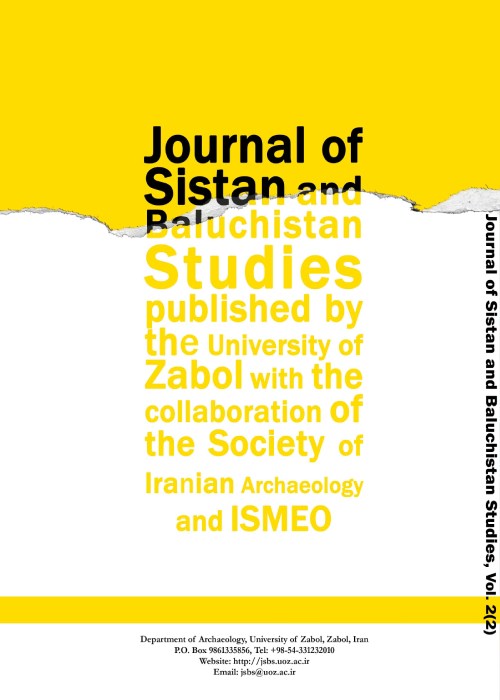ARCHAEOLOGY OF THE ANCIENT MINING AND SMELTING IN THE CENTRAL PART OF TABAS CITY, ON THE EDGE OF LUT DESERT
Author(s):
Article Type:
Research/Original Article (بدون رتبه معتبر)
Abstract:
Tabas city in South Khorasan province is one of the regions that have high capacities in terms of mining and metallurgy studies, and compared with the other regions of Iran, this region is unknown. The abundance of smelting areas and accumulated slag and the presence of mineral cavities to extract minerals in the central part of Tabas are proof of extensive mining and metal production in this region, which plays an important role in the economy and ecological sustainability of the region along with other economic activities. Regarding the quantity and quality of the studies prepared so far on mining and metallurgy in this city, the cultural and historical capacities of this cultural area have not been introduced as they should be. During the archaeological studies conducted by experts hired by the Cultural Heritage Office of South Khorasan, working in the central part of Tabas city, a mining site and two slag sites have been identified and studied, which indicates the role and importance of the mining and metalworking in the social and economic life of the central cultural region. Citing the results of the field method, reviewing texts and written sources related to the central part, identifying evidence related to the metalworking industry, smelting technology and type of the ore deposit thoroughly, this study has been provided to understand better the process and cycle of ancient metalworking, which includes three stages of mining, extraction, and melting. By typological and comparative studies of discovered slag with adjacent metal centers, it seems that the composition of slag includes the main elements of iron, lead, and copper. The typological and comparative studies of slag discovered in neighboring metal centers indicate that the composition of slag includes the main elements of iron, lead, and copper. The archaeological field studies conducted on the mines and smelting verify the fact that metallurgists in this area used open and underground methods to extract the ore, and after transferring the mineral parts to the smelting workshops and furnaces, they used the roasting method.
Keywords:
Language:
English
Published:
Journal of Sistan and Baluchistan Studies, Volume:2 Issue: 1, Jun 2022
Pages:
41 to 49
magiran.com/p2554795
دانلود و مطالعه متن این مقاله با یکی از روشهای زیر امکان پذیر است:
اشتراک شخصی
با عضویت و پرداخت آنلاین حق اشتراک یکساله به مبلغ 1,390,000ريال میتوانید 70 عنوان مطلب دانلود کنید!
اشتراک سازمانی
به کتابخانه دانشگاه یا محل کار خود پیشنهاد کنید تا اشتراک سازمانی این پایگاه را برای دسترسی نامحدود همه کاربران به متن مطالب تهیه نمایند!
توجه!
- حق عضویت دریافتی صرف حمایت از نشریات عضو و نگهداری، تکمیل و توسعه مگیران میشود.
- پرداخت حق اشتراک و دانلود مقالات اجازه بازنشر آن در سایر رسانههای چاپی و دیجیتال را به کاربر نمیدهد.
In order to view content subscription is required
Personal subscription
Subscribe magiran.com for 70 € euros via PayPal and download 70 articles during a year.
Organization subscription
Please contact us to subscribe your university or library for unlimited access!





